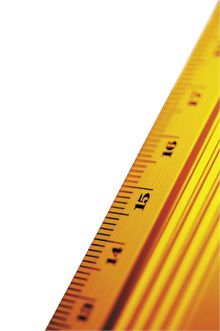Cost per square foot: Clear up the confusion
Count on another practices arbitrary figure, and you may be setting yourself up for disappointment when you see your own real numbers.

If you've even started looking seriously at a building project, you've probably heard the term “cost per square foot” thrown around. After a project is complete, this is calculated by dividing the total square footage by total building cost. But in the beginning stages of design, practice owners often use it as a reference point by looking at the numbers from similar hospital design projects to ensure they start out on the right financial track. Sounds simple enough-but unfortunately, it's not.
If you compare the numbers across several practices, sometimes you'll find large discrepancies. For example, take two of this year's Hospital Design Competition entrants: One 9,391-square-foot hospital cost $327 per square foot, while another 16,700-square-foot clinic was only $56.05 per square foot. Why?
For starters, the general cost of living in certain geographic areas affects your build. For instance, say you're building in New York City or California. You're bound to arrive at a much larger figure than the veterinary hospital in, say, Kansas did, because the former two locations generally tend to be pricier than the Midwest across the board: higher materials costs, higher labor, higher land costs. But that's just one piece of the puzzle. Here are three more variables that can dramatically change the picture:
1. Site cost.
This includes grading, your parking lot, landscaping, signage, utilities and the like, and it can fluctuate greatly depending on your region and piece of property. “Say one hospital was built on the plains of Texas where there's flat land for miles. They probably won't have a high site cost because they won't need to do much to make the land suitable for building,” explains Dan Chapel, architect and founder of Chapel Architects. “On the other hand, if a practice is built on the side of a mountain in Colorado, you can bet their site fees will be much higher.”
2. Professional fees.
You get a lot of help with a building project. So you could have the costs for an architect, surveyor, attorney, accountant, lender and additional professionals. But there can be a big range. Not all projects will need all those people on the team. Imagine that one practice owner gets in a big legal hassle buying the land, in which case she'd need to factor in lawyers' fees. Maybe another owner's sister is a contractor and she gets a discounted rate.
3. Materials.
Just like with your home remodel, higher-quality materials can really add up. So the choices you make when you pick flooring, countertops, doors and paint all affect your overall figure.
One of the unfortunate realities of a building project is that you can't forsee everything. So you're likely to have something pop up that adds to your costs. It's all part of the design process. So take the cost per square foot for what it is: a ballpark estimate.
“Early prices based on preliminary design don't have a lot of detail. During that stage, you probably haven't picked out door hardware, types of windows, roofing material, all those little things. So it's a little bit like a shot in the dark,” says Chapel. “As the drawings progress, we keep feeding the contractor those details and he's able to home in on a precise number.”
“It's like focusing a camera,” Chapel adds. “First you have a blurry image of what you're going to build. The closer you get to the end of that process, the clearer that image will become.”